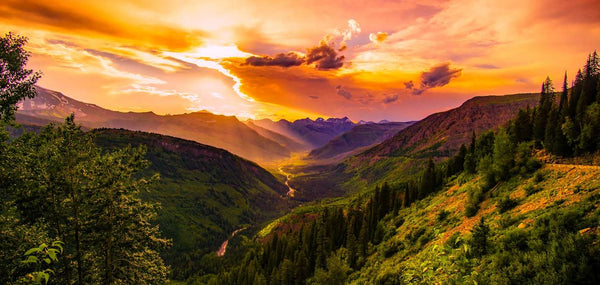
Get news, updates, & event Info delivered right to your inbox:
6 Positive Environmental News Stories from June that Will Make You Smile
With the beauty of summer here, it’s the perfect time to appreciate all that nature has to offer. Whether you’re laying out poolside or hiking your favorite trails, nature is all around you, wild and wonderful.
While we make the most of the summer months, we’re highlighting a few recently published environmental stories that will surely put a smile on your face!

1. EU’s Nature Restoration Law
The European Union’s Nature Restoration Law has been approved after months of deliberations. This brand-new law represents a commitment to restoring Europe’s damaged ecosystems while boosting biodiversity.
Now, you may be asking yourself: how will this be implemented? Well, the Nature Restoration Law aims to restore 20% of the EU’s land and sea areas by 2030, while fully restoring all degraded ecosystems by 2050. By restoring and revitalizing degraded ecosystems across Europe, this law is a major win for nature across the continent!

2. Western Australia Bans Single-Use Coffee Cups
For most people, turning on the coffee maker is the first step in our morning routine. Sadly, because so many people take their coffee on the go, single-use coffee cups are quite common. While these cups might seem like a convenient way to drink your morning cup of Joe, they can wreak havoc on our environment.
That’s why Western Australia has taken the first step toward minimizing waste by banning single-use coffee cups. Any business not complying with this ban will face a hefty fine, and individuals can be penalized.
In other words: this is the perfect time to invest in nature-friendly reusable coffee cups!

3. Ozone Layer is Recovering Faster Than Expected
Let’s think back to our days of 7th-grade science class. How many of you remember your teacher talking about Earth’s ozone layer? If you don’t remember, we got you!
“Ozone layer” refers to the concentration of ozone found in Earth’s stratosphere. This concentration protects life on Earth against harmful ultraviolet radiation from the sun, making it possible to spend time outside. Over the years, many factors, including air pollution and aerosol sprays, have damaged the ozone layer, reducing its ability to protect Earth from UV rays.
Recent studies show that chemical bans are working in our favor, and the ozone layer is recovering much faster than anticipated, underscoring the importance of global policies when it comes to protecting the planet.

4. New Australia National Park Is Home To 12 Threatened Species
Australia’s newest national park spans over 130 square miles, roughly the same size as Las Vegas, Nevada. The park is set to open to the public in late 2024 and is currently home to 158 native species.
Of those 158 species, 12 are threatened or endangered, which means the new park is tasked with ensuring their protection. National parks are a great way to conserve animal and plant species around the world, so this is a win for all species that call it home.

Rare Wild Cat No Longer Endangered
Conserving wildlife species that are considered endangered is critical. These species play vital roles in their ecosystems, and their continued existence is of the utmost importance. So, when we hear about a species that has effectively left the endangered list, that’s cause to celebrate!
The rarest cat in the world, the Iberian lynx, is officially no longer endangered –– after 20 long years of conservation efforts. These efforts have allowed the Iberian lynx population to increase 20-fold, making this the greatest recovery of a cat species ever achieved!

6. US National Parks Received $700 Million to Fight Climate Change
As we continue to see warming weather patterns and increased natural disasters, national parks need a way to defend themselves against the worst effects of climate change. Many national parks across the United States are already undertaking conservation and restoration projects to help restore and revitalize their lands.
Under the Inflation Reduction Act passed in 2022, US National Parks have received $700 million in federal funds to help facilitate these projects. The work doesn’t stop there. While the Inflation Reduction Act certainly helps, there’s still so much more that needs to be done. But it’s a big step in the right direction!
We hope you enjoyed reading June’s good news stories as much as we enjoyed featuring them! Remember, there is good in the world if you know where to look for it. And if you want to create your own good news, you can positively impact the environment by planting trees where they are needed the most!
